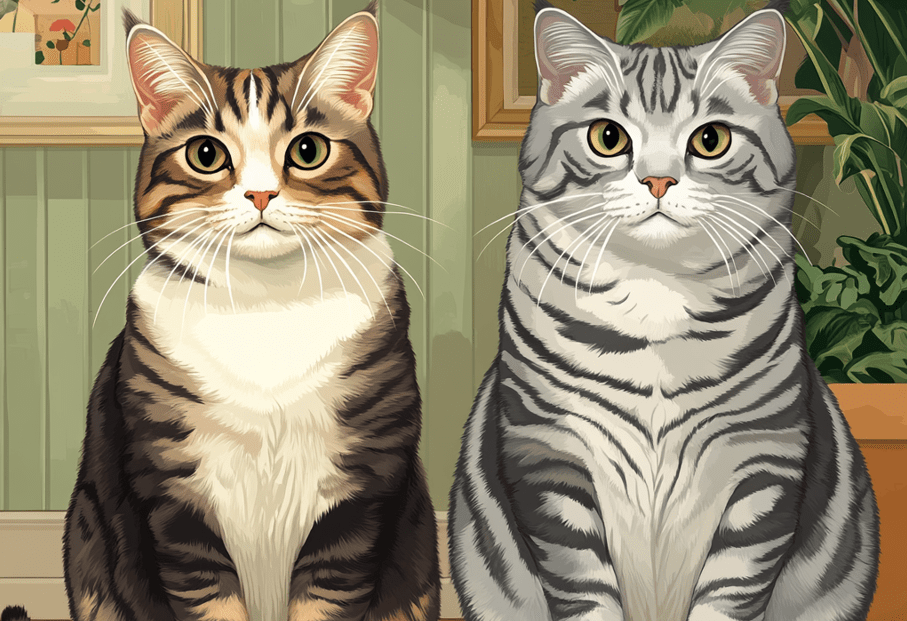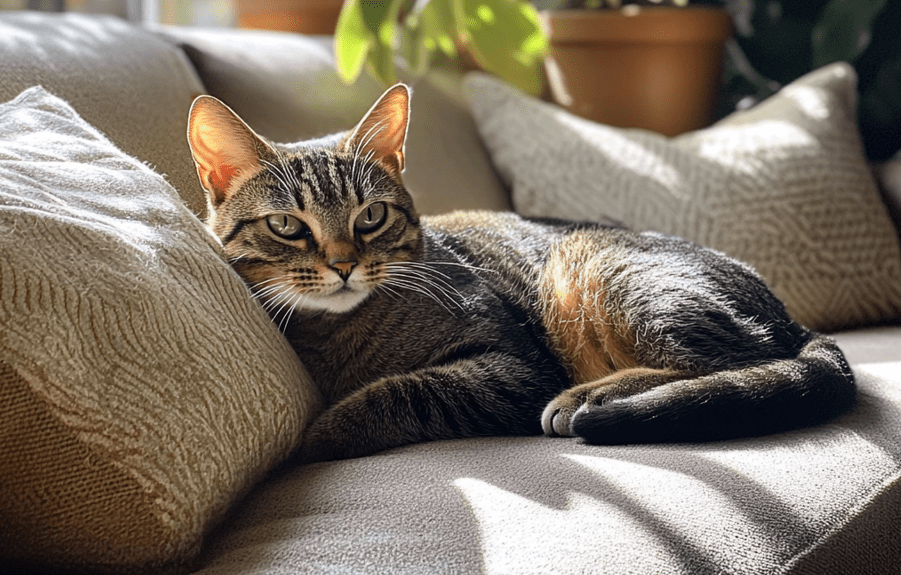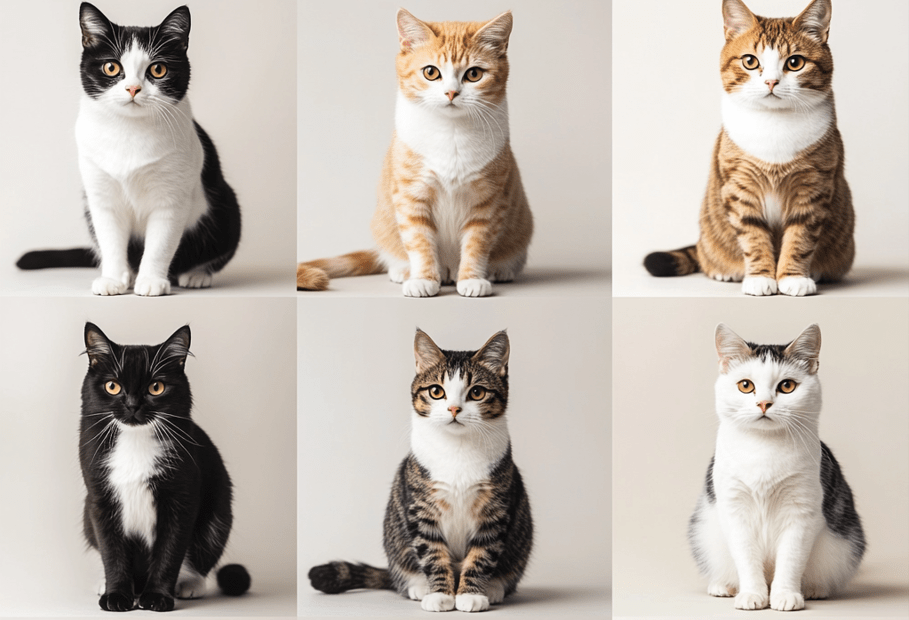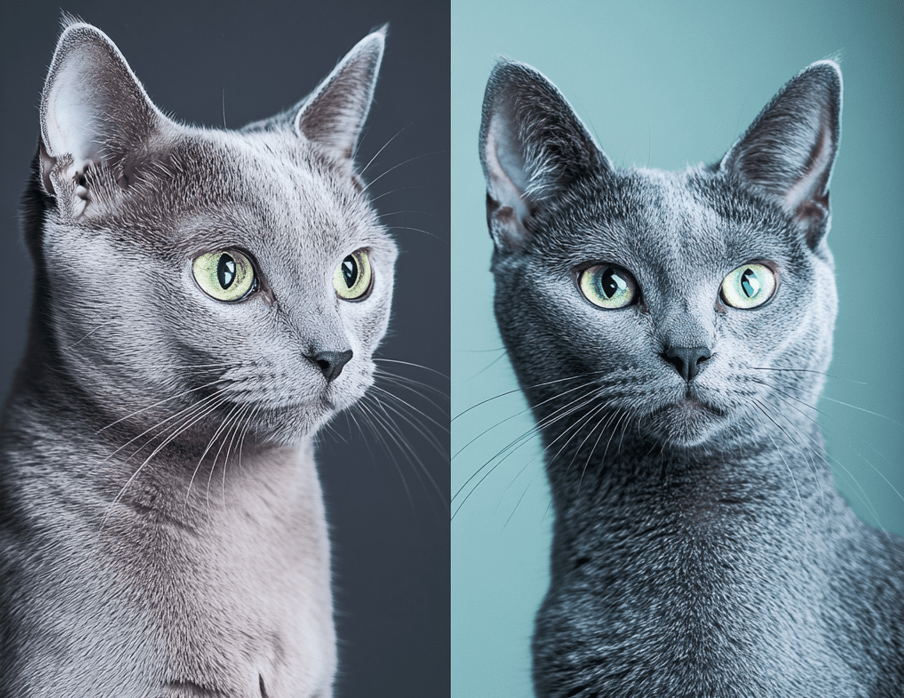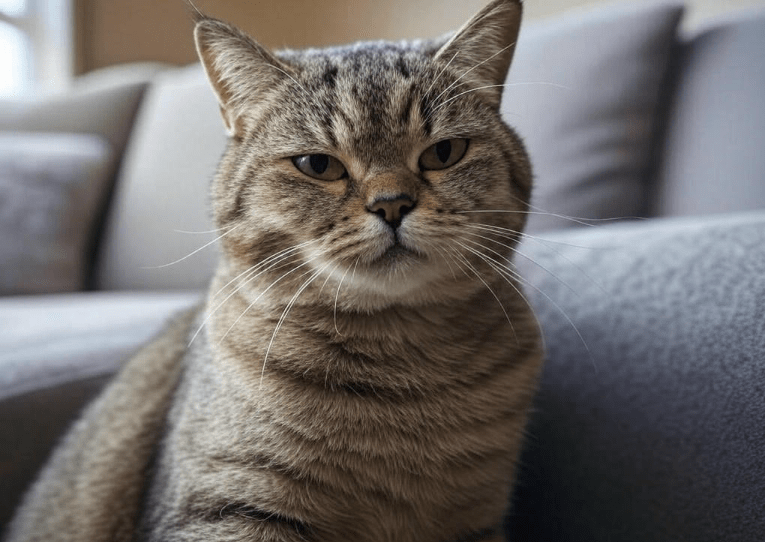
Keeping your Domestic Shorthair’s claws healthy is essential for their well-being and your peace of mind. Domestic Shorthairs, known for their short, dense coats and diverse personalities, rely on their claws for balance, play, and self-expression. However, many owners consider declawing to avoid scratching, unaware of the potential harm it causes. This comprehensive guide explores humane alternatives to declawing, offering practical tips to maintain your Domestic Shorthair’s claws healthy while protecting your home and fostering a happy, stress-free relationship with your feline companion.
Why Declawing Is Not the Answer
Declawing is often misunderstood as a simple nail removal, but it’s a serious surgical procedure called onychectomy. It involves amputating the last bone of each toe, equivalent to removing the tips of a human’s fingers at the last knuckle. For Domestic Shorthairs, this procedure can lead to numerous physical and behavioral issues:
Chronic Pain: The surgery can cause long-term pain, as cats must walk on the altered structure of their paws.
Infections and Complications: Post-surgical infections or improper healing can lead to further health problems.
Behavioral Changes: Declawed cats may become more aggressive, anxious, or prone to litter box avoidance due to discomfort.
Reduced Mobility: Claws are essential for balance, climbing, and stretching, and their removal can impair a cat’s natural movements.
Many veterinarians and animal welfare organizations, including the American Association of Feline Practitioners, discourage declawing except in cases of medical necessity, such as severe injury or tumors. Fortunately, there are effective, humane ways to keep your Domestic Shorthair’s claws healthy without resorting to this invasive procedure.
Understanding Your Domestic Shorthair’s Claw Health

A Domestic Shorthair’s claws are retractable, sharp, and grow continuously, much like human nails. They consist of a hard keratin sheath that sheds periodically, revealing a new, sharp claw underneath. Healthy claws are smooth, strong, and free from cracks or infections. However, neglecting claw care can lead to issues like:
-
Overgrown claws that curl into the paw pads, causing pain and infection.
-
Split or brittle claws due to poor nutrition or injury.
-
Infections from dirt or bacteria trapped in the claw sheath.
Regular maintenance and a supportive environment can prevent these problems, ensuring your cat’s claws remain functional and healthy.
Signs of Healthy vs. Unhealthy Claws
Healthy Claws:
-
Smooth, even texture without cracks.
-
Retract fully when relaxed and extend during play or scratching.
-
No redness, swelling, or discharge around the claw base.
Unhealthy Claws:
-
Overgrown or curling into the paw pad.
-
Brittle, cracked, or splitting claws.
-
Redness, swelling, or pus indicating infection.
-
Excessive shedding or failure to shed the outer sheath.
If you notice signs of unhealthy claws, consult a veterinarian to rule out underlying issues like nutritional deficiencies, infections, or trauma.
Step 1: Regular Claw Trimming
Trimming your Domestic Shorthair’s claws is a cornerstone of claw health. It prevents overgrowth, reduces scratching damage, and keeps the claws in good condition. Here’s how to do it safely:
Tools You’ll Need
Cat-Specific Nail Clippers: Use guillotine-style or scissor-style clippers designed for cats. Human nail clippers can splinter the claw.
Styptic Powder: To stop bleeding if you accidentally cut the quick (the pink part containing nerves and blood vessels).
Treats: To reward your cat and make the experience positive.
How to Trim Claws
Choose a Calm Environment: Pick a quiet time when your cat is relaxed, such as after a meal or nap.
Gently Hold the Paw: Press lightly on the paw pad to extend the claw. If your cat resists, wrap them in a towel or have someone help hold them.
Identify the Quick: Look for the pink area within the claw and avoid cutting into it. In clear claws, it’s visible; in dark claws, trim small amounts to be safe.
Trim the Tip: Cut just the sharp tip of the claw, about 1–2 mm, at a 45-degree angle. Repeat for each claw, including the dewclaws on the inner side of the front legs.
Reward Your Cat: Offer treats and praise to create a positive association with trimming.
Frequency
Trim your Domestic Shorthair’s claws every 2–4 weeks, depending on their activity level and scratching habits. Indoor cats may need more frequent trims, as they have fewer opportunities to naturally wear down their claws.
Tips for Success
-
Start young to get your cat accustomed to the process.
-
If your cat is anxious, trim one or two claws at a time and gradually increase the number.
-
Never force the process—stop if your cat becomes stressed and try again later.
Step 2: Provide Appropriate Scratching Surfaces
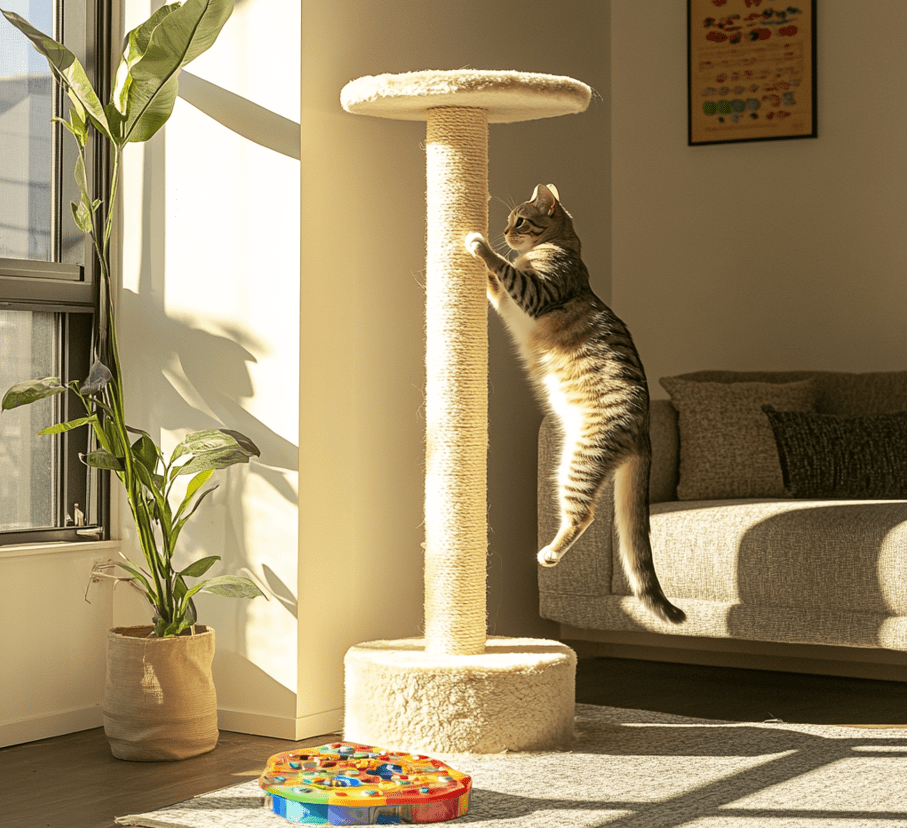
Scratching is a natural behavior for Domestic Shorthairs, serving multiple purposes: it removes the outer claw sheath, marks territory, and stretches muscles. Providing suitable scratching surfaces helps maintain claw health and redirects scratching away from furniture.
Types of Scratching Posts
Vertical Posts: Tall, sturdy posts covered in sisal rope or fabric are ideal for stretching and scratching.
Horizontal Pads: Some cats prefer flat surfaces like cardboard scratchers.
Inclined Scratchers: Ramps or angled boards offer variety.
Cat Trees: Multi-level trees with scratching surfaces encourage climbing and scratching.
Placement and Variety
-
Place scratchers in areas where your cat spends the most time, such as near their bed or by a window.
-
Offer multiple scratchers with different textures to cater to your cat’s preferences.
-
Sprinkle catnip on the scratcher to attract your Domestic Shorthair and encourage use.
Training Your Cat to Use Scratchers
-
Gently guide your cat’s paws to the scratcher to mimic scratching motions.
-
Reward them with treats or praise when they use it.
-
If they scratch furniture, redirect them to the scratcher without punishment—negative reinforcement can increase stress and unwanted behavior.
Step 3: Use Nail Caps as a Protective Measure
Nail caps are soft, plastic covers that fit over your Domestic Shorthair’s claws, preventing scratching damage without affecting claw health. They’re a popular alternative to declawing and are safe when applied correctly.
How to Apply Nail Caps
Trim the Claws: Start with a fresh trim to ensure the caps fit properly.
Select the Right Size: Nail caps come in sizes (small, medium, large). Most Domestic Shorthairs need small or medium caps.
Apply Adhesive: Fill the cap with a small amount of the provided glue, then slide it over the claw.
Hold in Place: Press gently for a few seconds to secure the cap.
Monitor: Check weekly to ensure the caps are intact, as they typically last 4–6 weeks before falling off during the natural shedding process.
Benefits of Nail Caps
-
Protect furniture, skin, and other pets from scratches.
-
Allow your cat to scratch naturally without causing damage.
-
Available in various colors for a fun aesthetic.
Considerations
-
Some cats may initially resist the caps, but most adjust within a few days.
-
Never leave caps on for too long—replace them as needed to avoid interfering with claw growth.
-
Consult your vet if your cat shows signs of discomfort or if the caps cause irritation.
Step 4: Support Claw Health Through Nutrition
A balanced diet plays a critical role in maintaining your Domestic Shorthair’s claw health. Nutrients like protein, biotin, and omega fatty acids strengthen claws and promote healthy growth.
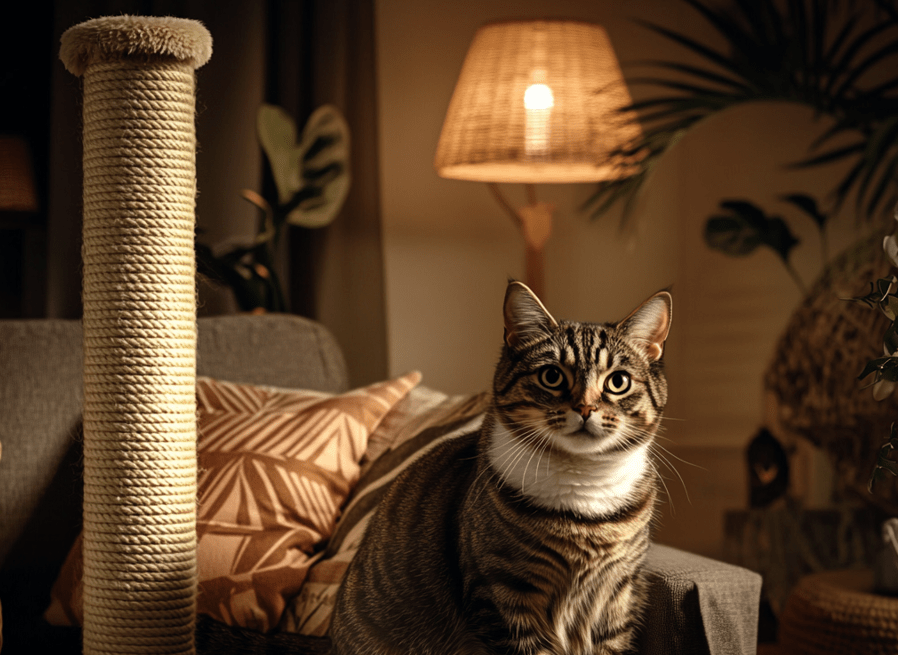
Key Nutrients for Claw Health
Protein: High-quality protein sources like chicken, fish, or turkey provide the building blocks for strong keratin in claws.
Biotin: This B-vitamin supports claw and coat health. It’s found in eggs, liver, and some commercial cat foods.
Omega-3 and Omega-6 Fatty Acids: Found in fish oil or flaxseed, these fats reduce inflammation and support skin health, which is closely tied to claw condition.
Zinc and Vitamin E: These nutrients promote healing and prevent brittle claws.
Choosing the Right Food
-
Select a high-quality, vet-recommended cat food labeled as “complete and balanced.”
-
Avoid foods with excessive fillers like corn or wheat, which offer little nutritional value.
-
Consider wet food to increase hydration, as dehydration can lead to dry, brittle claws.
Supplements
If your Domestic Shorthair’s claws are brittle or slow-growing, consult your vet about supplements like omega-3 oils or biotin treats. Never add supplements without professional guidance, as over-supplementation can cause imbalances.
Step 5: Monitor and Maintain Paw Hygiene
Dirty or neglected paws can lead to infections that affect claw health. Regular paw cleaning and inspection help keep your Domestic Shorthair’s claws in top condition.
Paw Cleaning Routine
Wipe Paws: Use a damp cloth or pet-safe wipes to clean your cat’s paws after outdoor play or litter box use.
Check for Debris: Remove dirt, litter, or small objects stuck between the toes or around the claws.
Inspect for Injuries: Look for cuts, swelling, or redness around the claw base, which may indicate infection or trauma.
Addressing Infections
If you notice signs of infection (redness, swelling, pus, or a foul odor), take these steps:
-
Clean the area with a vet-recommended antiseptic solution.
-
Prevent your cat from licking the area excessively, as this can worsen the infection.
-
Contact your vet for advice—they may prescribe antibiotics or recommend a topical treatment.
Preventing Infections
-
Keep the litter box clean to reduce bacteria exposure.
-
Avoid harsh chemicals or rough surfaces that can irritate your cat’s paws.
-
Dry your cat’s paws after they get wet to prevent fungal growth.
Step 6: Encourage Natural Claw Wear Through Play
Active play helps your Domestic Shorthair naturally wear down their claws, reducing the need for frequent trims. It also keeps them physically and mentally stimulated, preventing stress-related scratching.
Play Ideas for Claw Health
Wand Toys: Encourage your cat to leap and swipe, engaging their claws naturally.
Climbing Structures: Cat trees or shelves allow climbing, which wears down claws and stretches paw muscles.
Interactive Toys: Balls or toys with textures encourage batting and scratching motions.
Play Tips
-
Rotate toys regularly to keep your cat engaged.
-
Play for 10–15 minutes daily, ideally in short sessions.
-
Avoid rough play that could lead to claw injuries, such as tug-of-war with your hands.
Step 7: Create a Stress-Free Environment
Stress can lead to over-grooming or excessive scratching, which may damage your Domestic Shorthair’s claws. A calm environment supports overall claw health and reduces destructive behaviors.
Reducing Stress
Provide Safe Spaces: Offer hiding spots or cozy beds where your cat can retreat.
Maintain Routine: Cats thrive on consistency—keep feeding, play, and litter box cleaning schedules predictable.
Minimize Changes: Introduce new pets, people, or furniture gradually to avoid overwhelming your cat.
Use Pheromone Diffusers: Products like Feliway mimic calming feline pheromones, reducing anxiety.
Addressing Destructive Scratching
If your Domestic Shorthair scratches excessively due to stress:
-
Identify triggers, such as loud noises or changes in the home.
-
Redirect their energy to a scratcher or toy.
-
Consult a vet or feline behaviorist if the behavior persists, as it may indicate an underlying issue.
When to Consult a Veterinarian
While most claw care can be managed at home, some situations require professional attention:
-
Persistent overgrowth or curling claws despite regular trims.
-
Signs of infection, such as swelling, redness, or discharge.
-
Brittle or splitting claws that don’t improve with diet changes.
-
Behavioral changes, like aggression or litter box avoidance, which may be linked to claw discomfort.
A vet can perform a thorough examination, recommend treatments, or refer you to a feline behaviorist if needed.
Living with a Domestic Shorthair: A Balanced Approach
Maintaining your Domestic Shorthair’s claws healthy without declawing requires a combination of regular care, environmental enrichment, and attention to their physical and emotional needs. By trimming claws, providing scratchers, using nail caps, ensuring proper nutrition, and fostering a stress-free environment, you can protect your cat’s natural instincts while keeping your home scratch-free. This balanced approach not only preserves your cat’s claw health but also strengthens the bond between you and your feline friend.
Conclusion
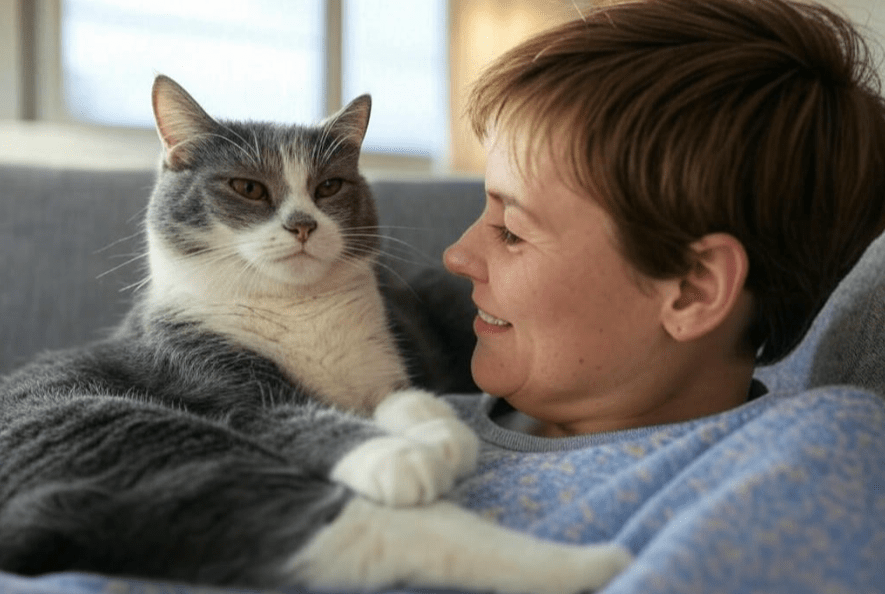
Your Domestic Shorthair’s claws are an integral part of their identity and well-being. Keeping them healthy without declawing is not only possible but also beneficial for your cat’s physical and mental health. From regular trims and appropriate scratching surfaces to proper nutrition and a calm environment, the strategies outlined in this guide empower you to care for your Domestic Shorthair responsibly. By prioritizing humane alternatives and consistent care, you can ensure your cat’s claws remain healthy, allowing them to live a happy, active life by your side.

